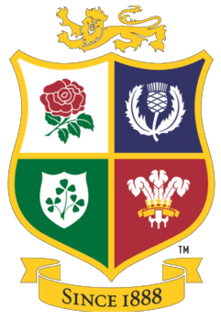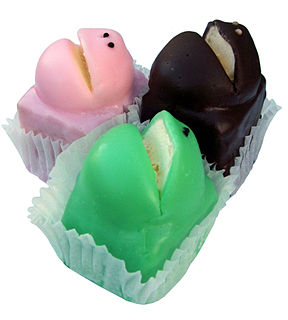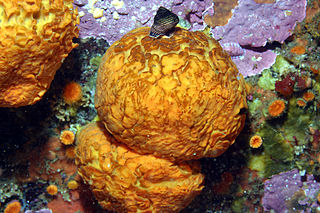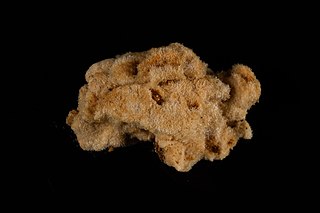
The British & Irish Lions is a rugby union team selected from players eligible for the national teams of England, Ireland, Scotland, and Wales. The Lions are a test side and most often select players who have already played for their national team, although they can pick uncapped players who are eligible for any of the four unions. The team currently tours every four years, with these rotating between Australia, New Zealand and South Africa in order. The most recent test series, the 2021 series against South Africa, was won 2–1 by South Africa.

The frog cake is an Australian dessert in the shape of a frog's head, composed of sponge cake and cream covered with fondant. It was created by the Balfours bakery in 1922, and soon became a popular treat in South Australia. Originally frog cakes were available exclusively in green, but later brown and pink were added to the range. Since then other variations have been developed, including seasonal varieties. The frog cake has been called "uniquely South Australian", and has been employed in promoting the state. In recognition of its cultural significance, in 2001 the frog cake was listed as a South Australian Heritage Icon by the National Trust of South Australia.
Dame Patricia Rose Bergquist was a New Zealand zoologist who specialised in anatomy and taxonomy. At the time of her death, she was professor emerita of zoology and honorary professor of anatomy with radiology at the University of Auckland.

The umbrella slug is a species of large sea snail or limpet, a marine gastropod mollusc in the family Umbraculidae. It is found in tropical to warm temperate parts of the Indo-Pacific and Atlantic Oceans, where it feeds on sponges.
Golf ball sponge may refer to several different species of sea sponges:

Tethya is a genus of sea sponges belonging to the family Tethyidae. Members of this genus all have a spherical body form and some are known to be able to move at speeds of between 1 and 4 mm per day.
Tethya samaaii, also known as the red golf ball sponge, is a species of sea sponge belonging to the family Tethyidae. It is spherical in shape and grows to about 6 cm in diameter. It is reddish in colour. It appears to be endemic to the west coast of South Africa and has been found in 12m of water.

Tethya aurantium, also known as the golf ball sponge or orange puffball sponge, is a species of sea sponge belonging to the family Tethyidae. It is spherical in shape, with a warty surface, and grows to about 10 cm in diameter. Oscula are present on the upper surface. The surface has sharp protruding spicules which can cause skin irritation if touched.

Arthur Dendy was an English zoologist known for his work on marine sponges and the terrestrial invertebrates of Victoria, Australia, notably including the "living fossil" Peripatus. He was in turn professor of zoology in New Zealand, in South Africa and finally at King's College London. He was a Fellow of the Royal Society.

Clathria (Clathria) is a subgenus of demosponge in the family Microcionidae.
Tethya rubra is a species of sea sponge belonging to the family Tethyidae. It is found in the Atlantic Ocean off the coast of Brazil.
Axinyssa is a genus of sea sponges belonging to the family Halichondriidae.

Acarnus is a genus of sponges belonging to the family Acarnidae. The genus has almost cosmopolitan distribution.
Plakortis bergquistae is a species of marine sponge in the order Homosclerophorida, first described in 2011 by Guilherme Muricy. The species epithet, bergquistae, honours Patricia Bergquist.
Phyllis Jane Fromont is a New Zealand and Australian scientist specialising in sponges.
Pipestela occidentalis is a species of sponge belonging to the family Axinellidae.
Michelle Kelly, also known as Michelle Kelly-Borges, is a New Zealand scientist who specialises in sponges, their chemistry, their evolution, taxonomy, systematics, and ecology.
Leucettusa lancifera is a species of calcareous sponge in the family Leucaltidae first described by Arthur Dendy in 1924, and found in New Zealand waters,.

Leucettusa tubulosa is a species of calcareous sponge in the family Leucaltidae first described by Arthur Dendy in 1924, and found in New Zealand waters,.









